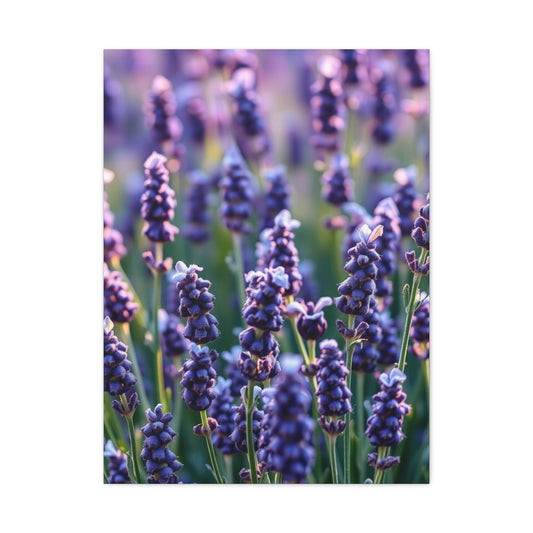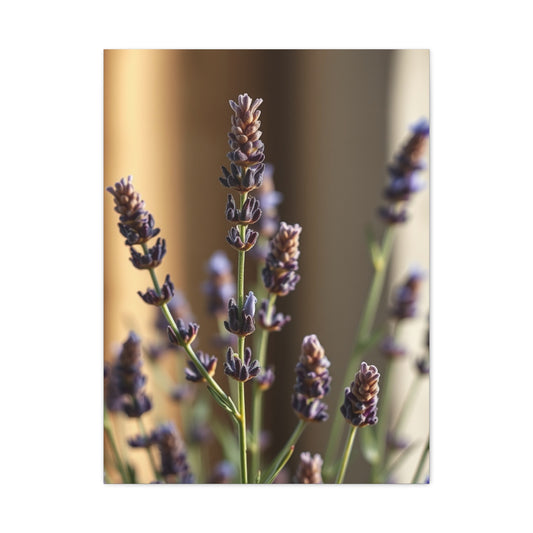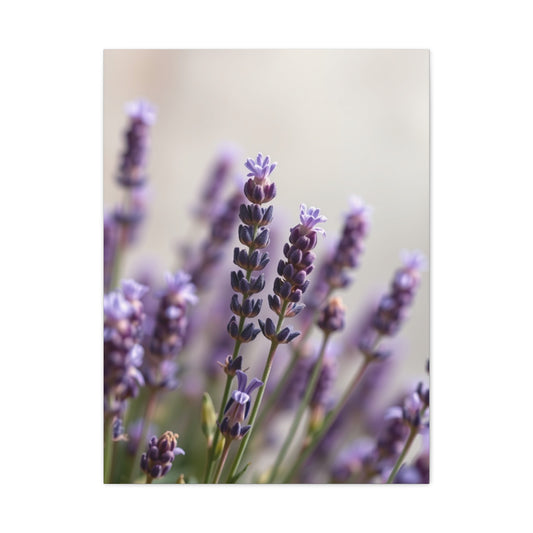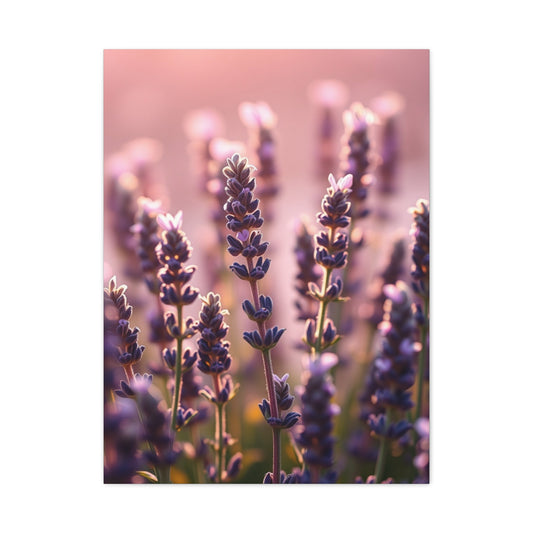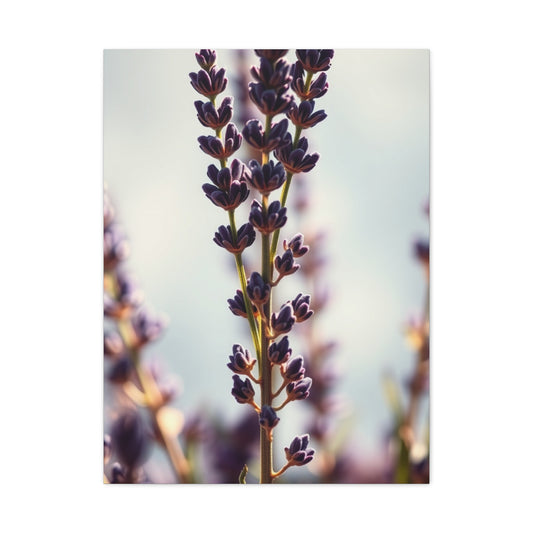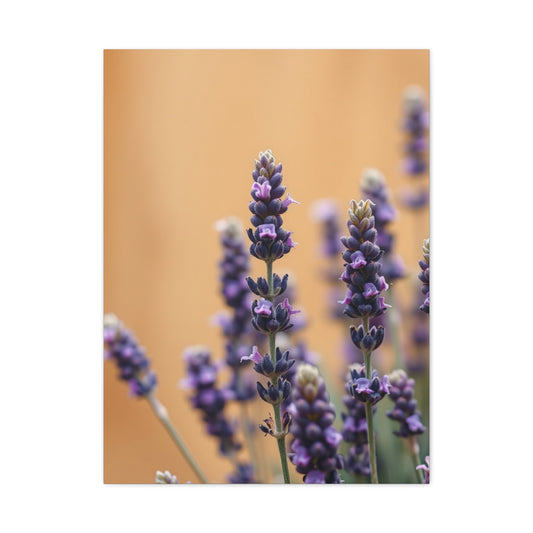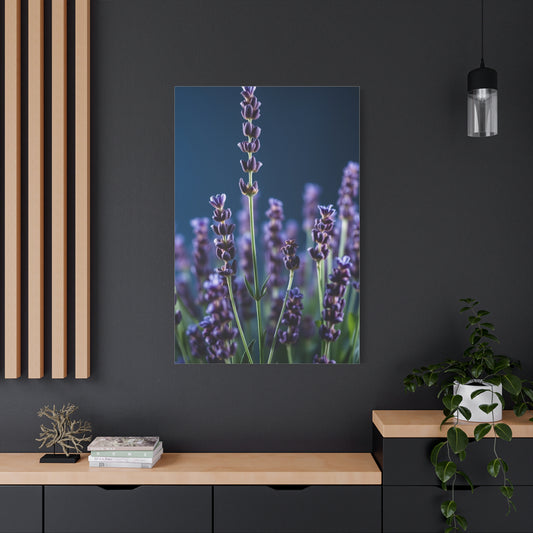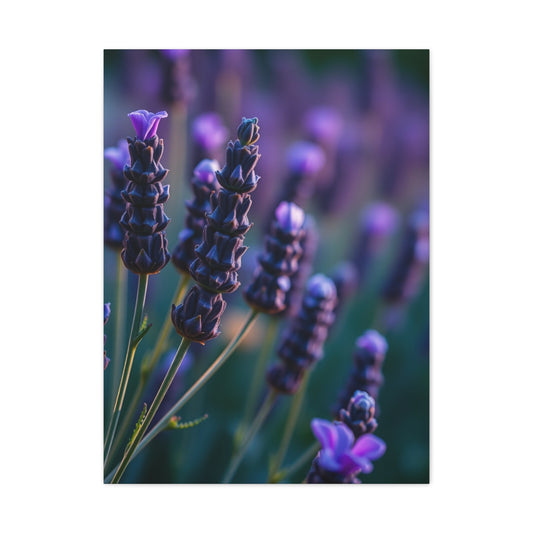Lavender Herb Wall Art: Boho Designs with Natural Wood Accents
Creating wall art that reflects personal style is one of the most fulfilling ways to decorate a home. When combining rustic wooden textures with soft lavender accents, a room can be transformed into a serene, bohemian-inspired retreat. Boho design thrives on natural elements, layered textures, and creative reuse of simple materials, making it the perfect style for crafting unique art pieces. This lavender and wood wall art project captures the heart of bohemian aesthetics while offering a calming influence through the scent and symbolism of lavender. For those who appreciate handmade artistry, this project is not just about decorating walls but also about cultivating mindfulness through crafting with natural elements.
The blend of wood, twine, glass bottles, and dried lavender results in an artwork that embodies simplicity and elegance. Each detail—from the choice of branch to the knots of the jute twine—adds authenticity to the final piece. More than a decorative item, this wall hanging becomes a storytelling element in a space, a reminder of how handmade objects hold meaning beyond their aesthetic appeal.
Historical Background
Wall art has been a part of human expression since the earliest cave paintings, where natural pigments were used to tell stories and depict daily life. Over time, decorative wall pieces evolved from purely functional or symbolic to artistic expressions of culture, spirituality, and individuality. Wooden art forms, in particular, have roots in ancient societies where carved panels, beams, and household objects were adorned with meaningful symbols. Wood was often considered a bridge between human life and nature, representing strength and connection to the earth.
Lavender has an equally fascinating history. Known in ancient Mediterranean civilizations, lavender was cherished for its healing qualities and aromatic properties. Egyptians used it in their rituals and cosmetics, while Romans integrated it into bathing practices and perfumery. During the Middle Ages, lavender was associated with protection and purification, often placed in homes to ward off negativity. When combined with rustic wooden elements, lavender not only enhances the sensory appeal but also carries forward its cultural heritage of comfort and serenity.
The merging of natural wood and lavender in wall art brings together two timeless materials that symbolize grounding and calm. In the bohemian movement of the twentieth century, such combinations became popular as artists and designers embraced organic, handmade décor as a reaction against mass-produced uniformity. This historical lineage underscores why creating a piece like boho lavender and wood wall art continues to resonate with modern creatives.
Core Concepts and Foundations
The foundation of boho wall art lies in its philosophy of blending natural materials with an unstructured, free-spirited approach. Unlike traditional decorative styles that emphasize symmetry and polish, boho aesthetics thrive on asymmetry, layering, and the use of unconventional objects. In this project, the core concepts are rooted in the juxtaposition of raw wood with the delicate softness of dried lavender.
Twine, glass bottles, and a sturdy tree branch serve as the structural foundation of the piece. Each of these materials contributes to the authenticity of the artwork. Jute twine, known for its earthy appearance and strength, complements the rustic character of the wood while creating the practical means of suspending the bottles. The milk bottles serve as minimalist vessels, their transparency allowing the lavender stems to remain visible and highlighted as part of the composition. The lavender itself functions as both a visual and aromatic element, introducing shades of purple and a gentle fragrance to the environment.
This project embodies the principle that art does not need expensive supplies or professional tools. Instead, it demonstrates that meaningful wall art can be achieved by reimagining everyday materials. This foundation aligns with the essence of do-it-yourself design, where creativity is valued over perfection, and personal involvement becomes part of the artistic expression.
Types and Categories
Boho lavender and wood wall art belongs to a broader category of handmade decorative wall hangings. Within this category, there are several related types that share overlapping characteristics. Herbal wall art often incorporates dried plants such as rosemary, sage, or lavender as both decorative and functional items. Rustic wooden wall art features reclaimed wood, branches, or driftwood as a central element, highlighting imperfections as part of its charm. Glass bottle wall art uses transparent or tinted vessels to display plants, candles, or other small objects, creating a layered look of texture and light.
Another category closely tied to this project is functional art, where an object serves a practical role while also acting as a decorative piece. In this case, the lavender within the bottles can diffuse a subtle fragrance into a room, making the wall hanging not only visually appealing but also sensory in experience. Bohemian wall art itself is an expansive category, often characterized by woven textiles, macramé, natural fibers, and eclectic combinations of found materials. This lavender and wood wall project falls naturally within this spectrum, blending the organic qualities of rustic craft with the ethereal beauty of dried botanicals.
Practical Applications
Beyond being an eye-catching addition to a wall, this project demonstrates how simple handmade art can elevate interior design. Lavender and wood wall art can be used in bedrooms to promote calm and relaxation, in living rooms to create a conversation piece, or in entryways to establish a welcoming, natural ambiance. It also makes a thoughtful, handmade gift, suitable for occasions such as housewarmings or weddings, where the symbolism of lavender as a plant of peace and harmony becomes deeply meaningful.
Additionally, the project can inspire variations and adaptations. By substituting lavender with other dried herbs, each piece can take on a new character and purpose. Rosemary can suggest resilience and strength, eucalyptus can add freshness and healing associations, and wildflowers can embody spontaneity and vibrancy. Similarly, replacing the milk bottles with mason jars, vintage vials, or ceramic containers allows for experimentation with texture and form. Even the branch itself can be substituted with driftwood or reclaimed timber, ensuring each wall art piece is unique and personal.
From a practical standpoint, the act of creating the wall hanging serves as an exercise in mindfulness. Tying knots, arranging lavender, and balancing the branch all require focus, patience, and creativity, offering the maker a meditative experience. The result is not merely a decorative object but a personal artistic achievement that strengthens the connection between individual creativity and natural beauty.
Techniques and Methods
Crafting boho lavender and wood wall art requires both imagination and technique, balancing raw creativity with practical skills. The process begins with gathering the essential elements: a sturdy tree branch, twine, dried lavender, and bottles. While these materials are humble, the way they are handled makes the difference between an amateur project and an artwork that feels cohesive and intentional. The technique of tying knots in the twine, for example, is not merely a mechanical step but a fundamental part of the structure. Knowing how to create consistent loops and secure knots ensures the bottles remain balanced and aligned, while still retaining the organic charm characteristic of boho aesthetics.
One of the most effective methods is to measure the twine lengths before beginning. Even though the bohemian style often embraces asymmetry, intentional variation creates harmony. Cutting each length slightly longer than needed allows room for adjustments, while practicing knots beforehand prevents the twine from fraying or becoming too weak. Another technique involves spacing the bottles evenly along the branch. Some artisans prefer mathematical precision, while others embrace intuitive placement, letting the natural curves of the wood dictate where each bottle should rest.
When it comes to preparing the lavender, trimming the stems at an angle helps them sit more gracefully within the bottles. Dry lavender is delicate, and handling it with gentleness avoids unnecessary breakage. Some choose to mix lavender with complementary botanicals such as dried wheat, chamomile, or eucalyptus to create layered bouquets inside the vessels. In doing so, the wall art evolves into a more dynamic arrangement that appeals to sight, scent, and texture.
Hanging the piece also requires a thoughtful method. Using strong screws or wall hooks anchors the artwork securely, particularly since the branch and glass add weight. Some artisans add protective padding behind the branch to prevent wall scratches. Others use a secondary piece of twine or chain across the branch to distribute weight evenly. These subtle methods elevate the project from a simple craft to a lasting decorative element that can endure over time.
Finishing touches often involve experimenting with spacing, height, and layering. Adding a strand of twine for decorative purposes or incorporating a single charm or bead can personalize the artwork further. What defines the success of this project is not the complexity of technique but the balance between structure and free-flowing design, a hallmark of bohemian art.
Challenges and Common Mistakes
Every creative process comes with its share of difficulties, and crafting boho lavender and wood wall art is no exception. One of the most common challenges is managing the weight of the materials. A branch that appears lightweight at first may become unexpectedly heavy once bottles and lavender are added. If the wall anchor is not sturdy enough, the entire piece may tilt or even fall, which not only ruins the artwork but also risks damage. Choosing the right branch—thick, strong, yet not excessively heavy—is crucial, and this decision is often underestimated by beginners.
Another frequent mistake is uneven knotting of the twine. When knots are inconsistent, bottles may hang at awkward angles or clash against one another. The result can appear haphazard rather than artfully bohemian. Practicing knots on spare twine before committing to the final assembly can save time and frustration. Similarly, miscalculating the twine length often leads to either bottles hanging too low or not aligning properly with the branch.
Lavender itself poses its own challenges. Because it is delicate and brittle once dried, stems may snap or shed flowers easily during the arranging process. Some creators rush the step of trimming, causing uneven bouquet lengths that disturb the balance of the composition. Others place too much lavender in each bottle, creating a cluttered look instead of the light, airy style that defines boho wall art.
Aesthetic missteps also occur when makers overdecorate the piece. The charm of boho lavender and wood art lies in its restraint and natural authenticity. Adding too many accessories, such as colorful beads or artificial flowers, may overwhelm the simple elegance of the lavender and wood. The best results often come from a thoughtful balance between embellishment and simplicity.
Hanging errors are another recurring issue. Using inadequate nails or adhesive strips leads to weak support. A heavy branch requires a secure anchor, preferably a screw drilled into a stud or a heavy-duty wall hook. Skipping this step often results in the entire piece leaning forward or slipping over time. A common mistake is hanging the art too high or too low on the wall, which disrupts the visual flow of the room. Placing it at eye level or in harmony with surrounding furniture creates a more intentional presentation.
Lastly, one subtle but important mistake is neglecting to consider the scent of lavender. While soothing for many, the fragrance may be too strong for some individuals in small spaces. Overstuffing bottles with lavender intensifies the aroma, which may overwhelm rather than calm. Moderation ensures that the sensory aspect enhances rather than distracts from the room’s atmosphere.
Trends and Future Outlook
Boho lavender and wood wall art reflects broader trends in interior design that are shaping the future of home decoration. One of the strongest currents today is the resurgence of handmade and sustainable décor. As consumers increasingly seek alternatives to mass-produced goods, there is a renewed appreciation for crafts that use natural, renewable materials. The combination of reclaimed branches, dried lavender, and twine resonates with this eco-conscious movement, aligning with values of sustainability and authenticity.
Another trend influencing the popularity of such projects is the rise of sensory-driven design. Home environments are no longer judged only by visual appeal but also by how they engage multiple senses. Lavender brings fragrance into the equation, while wood and twine add tactile richness. This multi-sensory approach makes boho wall art more immersive than purely visual decorations, and future trends suggest more designers will incorporate aroma and texture into their works.
Minimalist boho fusion is also emerging as a notable outlook. While traditional bohemian design is known for its abundance of colors and textures, modern adaptations are merging it with minimalist principles. This results in pieces that highlight a few essential materials—like wood, lavender, and glass—while keeping the design open and uncluttered. Such restrained elegance appeals to contemporary tastes while maintaining the free-spirited essence of boho style.
Technology is shaping the outlook as well. Social media platforms have created thriving communities where DIY projects are shared, adapted, and celebrated. This accessibility fuels new interpretations of lavender and wood wall art, with makers across the world infusing their cultural touch into the basic concept. The growing popularity of virtual marketplaces also means handmade wall art can reach global audiences, turning what was once a personal project into a potential livelihood for artisans.
Future trends may even see the integration of functional technology into rustic wall art. For example, glass bottles could be adapted to hold small LED candles, creating a soft illumination effect. Branches might be combined with hidden supports that double as shelving. Lavender could be replaced seasonally with other botanicals, allowing the art to evolve with the year. The adaptability of this style ensures its relevance in changing design landscapes, as it naturally evolves without losing its handmade soul.
Expert Insights
Designers and artisans who specialize in handmade wall art often emphasize the balance of material choice and technique. Many agree that the charm of boho lavender and wood wall art lies in its imperfections. Interior decorators highlight that authenticity is more important than precision, as slightly uneven twine lengths or natural knots in the wood add to the character of the piece. The goal is to celebrate raw beauty rather than conceal it.
Herbalists and aromatherapists add another layer of insight. They note that lavender, beyond its decorative appeal, carries calming properties that reduce stress and promote relaxation. Experts suggest placing such art in spaces where tranquility is needed, such as bedrooms or meditation corners. They also emphasize the importance of sourcing quality dried lavender, as low-grade or overly processed lavender loses both fragrance and visual appeal.
Craft educators highlight the therapeutic aspect of the process. The repetitive act of knotting twine and arranging flowers can become a form of meditative practice, much like knitting or pottery. They encourage makers not to rush but to embrace the slowness of crafting, using it as a mindful escape from daily pressures. In workshops, instructors often point out that every participant’s piece looks different, and this individuality is what makes the craft valuable.
From a design perspective, experts recommend integrating lavender and wood wall art into spaces with neutral or earthy palettes, where it can serve as a focal point. They caution against placing it in overly cluttered rooms, as its simplicity may be overshadowed. Stylists often suggest pairing it with complementary boho accents such as woven rugs, rattan furniture, or macramé wall hangings to create a cohesive environment.
Market analysts observing the growth of handmade décor also provide valuable insight. They note the increasing demand for customizable art pieces, where buyers request specific herbs, bottle shapes, or wood finishes. This trend indicates that the future of boho lavender and wood wall art lies in personalization, allowing each piece to carry the unique imprint of its maker and owner.
In conclusion, the expert perspective reinforces that this type of wall art is more than a craft project. It is a holistic blend of design, wellness, sustainability, and self-expression. By following the guidance of those who have studied both materials and design trends, anyone can elevate their lavender and wood wall art from a simple DIY experiment into a timeless decorative statement.
Emerging Trends in Wall Art
The world of wall art is constantly evolving, shaped by cultural shifts, technological innovations, and a growing desire for personalization. In recent years, the appreciation for handmade works has surged, creating an environment where rustic lavender and wood art find a natural place. One of the most striking trends is the emphasis on sustainability. Homeowners and designers alike are turning to repurposed, eco-conscious materials, not only for their aesthetic charm but also for their ethical value. Wooden branches collected from natural settings, dried lavender sourced from local farms, and natural twine align perfectly with this sustainable movement.
Another emerging trend is the blending of sensory design into wall art. Traditionally, wall décor was created primarily for visual appeal, yet contemporary artisans are embracing multi-sensory experiences. Lavender’s soothing aroma, combined with the tactile appeal of twine and wood, transforms a simple wall hanging into an immersive piece of living art. This connection to multiple senses enhances emotional well-being, creating more profound interactions between art and its audience.
The influence of global design cultures is also shaping new directions. Bohemian art, though deeply rooted in free-spirited ideals, is being adapted with influences from Scandinavian minimalism, Japanese wabi-sabi, and Mediterranean rustic charm. These cross-cultural elements give rise to eclectic styles where lavender and wood wall art may incorporate additional touches like ceramic accents, metallic highlights, or woven fibers. This fusion expands the boundaries of boho aesthetics, offering endless ways to reinterpret a single concept.
Technology is also playing a significant role. Social platforms, especially visually-driven ones, encourage makers to showcase and share their unique wall art creations. Tutorials spread globally, inspiring countless variations and adaptations. This digital momentum keeps trends alive, while also allowing regional ideas to gain international recognition. The simple act of tying lavender to wood becomes part of a global conversation about artistry, nature, and lifestyle.
Another notable development is the rise of modular wall art. Instead of a single static piece, modular designs allow for rearrangement and transformation over time. A lavender and wood hanging can be modified seasonally by swapping herbs, bottles, or branches. This adaptability appeals to homeowners who seek dynamic and ever-changing interiors. Future trends suggest that art that evolves with its environment will continue to thrive.
Finally, personalization remains a cornerstone of modern wall art. Makers are customizing their pieces with initials, hand-painted touches, or bespoke combinations of botanicals. This trend underscores the emotional value of art as more than décor; it becomes a reflection of individuality, memory, and personal story. Lavender, with its historical associations of peace and calm, often serves as a symbolic centerpiece in these creations.
Step-by-Step Guides
For those eager to bring boho lavender and wood wall art into their own spaces, following a thoughtful step-by-step process ensures the project not only succeeds but also becomes a fulfilling experience. Each step is more than a mechanical instruction; it is an invitation to engage with creativity, patience, and a love of natural elements.
Step One: Gathering the Materials
Start by selecting a branch that feels right for your vision. Ideally, choose one that is sturdy yet light enough to hang comfortably on a wall. Branches with natural bends or knots add character, while smoother options create a minimalist effect. Once the branch is chosen, gather six small bottles or jars, dried lavender stems, and jute twine. It is wise to collect extra lavender and twine in case adjustments are needed.
When sourcing bottles, consider the overall mood you want to create. Clear milk bottles are timeless and rustic, while colored glass can add a subtle accent of green, blue, or amber. Lavender should be fully dried to avoid mold, but it should retain a rich purple hue for maximum visual effect. Twine, preferably natural jute, contributes an earthy texture that enhances the bohemian feel.
Step Two: Preparing the Branch
The branch is the foundation of the project, so prepare it carefully. If collected outdoors, brush away dirt and loose bark, leaving the surface natural but clean. Some prefer to sand lightly for smoothness, while others embrace the raw character. Avoid coating it with glossy finishes, as this diminishes the organic essence that makes the piece compelling. Instead, if preservation is necessary, a light application of natural wax or oil can protect the wood while maintaining its rustic charm.
Decide whether to leave the branch in its natural length or trim it to fit the intended wall space. Using a handsaw to cut ends neatly gives a polished effect, but uneven edges create a wilder, boho impression. Trust your aesthetic instincts in this step, as the branch sets the tone for the entire composition.
Step Three: Cutting and Measuring the Twine
Twine is the practical element that unites the branch with the bottles. Cut six lengths of twine, each around twenty-four inches, to allow for flexibility in knotting. It is better to begin with excess length and trim later than to risk short, unusable strands. Practice tying knots on scrap twine before committing to the final assembly, ensuring the loops are both tight and visually consistent.
Wrap the twine several times around the lip of each bottle, tying firm knots that secure the vessel in place. Consider experimenting with different knot styles such as square knots, clove hitches, or overhand loops. Each knot carries its own aesthetic rhythm, and some may find the process of knot-tying to be meditative, a moment of slow craft in an otherwise fast-paced world.
Step Four: Attaching Bottles to the Branch
Once knots are secure, position the bottles along the branch. Spacing is key here: too close together, and the arrangement looks crowded; too far apart, and the balance feels disrupted. Allow the natural curves of the branch to influence placement. Hang each bottle so that it dangles at approximately eight inches from the branch, adjusting lengths until the overall flow feels harmonious.
This stage often requires patience and trial. Bottles may tilt slightly, or twine may loosen on the first attempt. Adjust until satisfied with both symmetry and organic variation. A hallmark of boho design is its refusal to be rigid, so embrace a degree of asymmetry while still aiming for visual rhythm.
Step Five: Adding Lavender Stems
Trim the lavender stems to desired lengths, ideally varying slightly to create depth. Insert a small bundle into each bottle, allowing some stems to extend higher than others. Do not overcrowd; the beauty of lavender lies in its slender form and delicate blossoms. Mixing in small accents such as wheat stalks, baby’s breath, or rosemary can introduce subtle contrast, though lavender alone creates a more cohesive effect.
Handle stems with care, as dried lavender is fragile. Some artisans gently spray lavender with a natural fixative like unscented hairspray to reduce shedding, though this is optional. Take time arranging the stems in each bottle, letting them fan out naturally rather than forcing them into uniformity.
Step Six: Hanging the Artwork
To hang the completed piece, tie a length of twine at each end of the branch. The twine can then be looped onto a strong screw, wall hook, or nail. Placement on the wall should be at a comfortable height, typically at or slightly above eye level. Consider the surrounding décor: above a sofa, it should align with the furniture’s scale, while in a narrow hallway, it may serve as the focal point of the wall.
Ensure the wall support is strong enough to hold the combined weight of wood, bottles, and lavender. A large branch with glass bottles may require drilling into wall studs rather than relying on simple nails. Once hung, step back and assess the arrangement. Adjust bottles, stems, and twine if necessary to achieve a balanced appearance.
Step Seven: Personalizing the Design
Personalization is where this project becomes truly unique. Some may choose to decorate the twine with wooden beads, feathers, or small charms. Others may stain the branch with a natural hue to match their interior palette. Seasonal adaptations are also possible: replacing lavender with autumn leaves in fall, evergreen sprigs in winter, or fresh wildflowers in spring. This adaptability keeps the artwork alive and relevant throughout the year.
Photographing the finished project not only captures the accomplishment but also inspires others to try their own variations. Sharing the process, whether through personal stories or online platforms, adds to the growing community of makers who appreciate natural, handmade art.
Advanced Techniques for Refinement
Once the foundational steps of crafting lavender and wood wall art are mastered, more advanced techniques can refine the project and elevate it into a professional-level creation. These refinements do not necessarily demand costly materials but rather thoughtful adjustments and intentional design choices. One such approach is layering textures. Instead of a single row of bottles, some artisans introduce multiple levels by suspending shorter twine strands in staggered heights. This adds dimension and visual depth, making the artwork more sculptural than flat.
Another refined method is enhancing the wood surface. While the raw branch offers rustic charm, some choose to carve subtle patterns or symbols into the bark, echoing ancestral traditions of wood engraving. Light carving or burning designs into the branch can create motifs such as leaves, spirals, or abstract lines, each adding a sense of personal artistry. For those who prefer subtlety, natural staining with tea, coffee, or herbal infusions can darken or tint the wood slightly, lending a warm patina without losing its authenticity.
Experimenting with knot variations also contributes to refinement. Beyond functional knots, decorative macramé-style knots can be incorporated into the twine for both support and beauty. These knots provide rhythm along the strands, echoing the handmade traditions of bohemian artistry. By integrating these techniques, the wall hanging becomes a blend of functionality and ornamentation, speaking not only to craft but also to creativity.
Integrating Wall Art into Interior Spaces
A handmade lavender and wood piece, though captivating on its own, achieves its full potential when thoughtfully integrated into interior design. Placement is key to ensuring harmony. In a bedroom, such a piece brings serenity when hung above the bed, where its presence promotes calm before sleep. In living rooms, it becomes a conversational focal point when positioned over a sofa or fireplace. Hallways and entryways benefit from its welcoming aura, setting the tone as soon as guests enter.
Complementary styling also enhances integration. Neutral color palettes of creams, sands, and soft greys allow the lavender’s muted purple tones to stand out. Pairing the wall art with woven rugs, macramé hangings, or rattan furniture strengthens the bohemian aesthetic. Meanwhile, minimalist interiors benefit from the natural textures of wood and twine, which soften sleek lines with warmth. Even industrial spaces, dominated by metal and concrete, can gain balance from the organic contrast of lavender and wood.
Lighting is another essential factor. Natural sunlight enhances the translucence of glass bottles and highlights lavender’s soft hues, while warm artificial lighting can transform the piece into a glowing centerpiece during the evening. Some decorators even position small hidden lights behind the branch, creating subtle shadows that emphasize the dimensionality of the design.
Expanding Variations of Boho Wall Art
While lavender and wood create a timeless pairing, the versatility of this project invites countless variations. Substituting lavender with other dried botanicals offers seasonal or thematic transformations. Dried eucalyptus introduces a soothing green fragrance, while wildflowers infuse bursts of color and a sense of spontaneity. In autumn, stalks of wheat or corn husks create harvest-inspired décor, while in winter, evergreen sprigs and cinnamon sticks add festive warmth.
The vessels themselves also provide opportunities for variation. Clear glass bottles evoke simplicity, but vintage jars, ceramic vials, or even recycled tin cans introduce fresh character. Some artisans upcycle perfume bottles or apothecary jars, turning them into eclectic vessels that reflect personal taste. Twine, too, can be substituted with leather cords, hemp rope, or even strips of woven fabric, each altering the texture and mood of the finished piece.
Scaling the project up or down creates additional diversity. A small branch with only two or three bottles may suit a compact apartment, while an expansive branch with multiple strands makes a bold statement in a larger room. Grouping several smaller wall hangings creates a gallery-style arrangement, while one oversized piece can anchor a wall on its own. This adaptability ensures that lavender and wood wall art can be tailored to nearly any setting or lifestyle.
Emotional and Symbolic Significance
Handmade wall art carries significance beyond its decorative value. Lavender, long associated with peace, purity, and calmness, infuses the artwork with emotional resonance. Placing such a piece in a home is not only an act of styling but also an invitation to tranquility. The act of creating the artwork itself becomes symbolic—tying knots, arranging stems, and suspending bottles mirrors the weaving of patience and mindfulness into daily life.
Wood adds its own symbolic weight. As a material deeply connected to the earth, it signifies grounding, strength, and endurance. When branches are repurposed into art, they carry with them the memory of growth and resilience. The combination of lavender and wood thus embodies a dialogue between fragility and sturdiness, serenity and permanence. This interplay deepens the connection viewers feel when they encounter the piece in a home environment.
For many, handmade art becomes a cherished heirloom. Each knot, curve, and lavender bundle reflects the hands that created it. When given as a gift, it communicates thoughtfulness and intention, carrying far greater meaning than store-bought décor. The symbolic layers of this art ensure that it resonates not only visually but emotionally as well.
Practical Care and Longevity
Maintaining lavender and wood wall art requires simple yet mindful care. Because dried lavender is delicate, the piece should be kept out of direct sunlight to preserve its color and prevent fading. Excess humidity can cause the lavender to wilt or mold, so positioning it in a well-ventilated, dry area is essential. Occasionally, dusting the bottles and the branch with a soft brush keeps the piece fresh and prevents buildup.
Some makers choose to refresh the lavender seasonally by replacing old stems with new ones. This not only revives the fragrance but also maintains vibrancy. If stems begin to shed excessively, lightly spraying with a natural fixative such as clear botanical spray can help stabilize them. Twine and knots should be checked periodically to ensure they remain secure, as natural fibers may stretch or loosen over time.
By caring for the artwork attentively, it can remain a beautiful feature for years. The slight aging of wood and soft fading of lavender often add to its character, creating an evolving piece that reflects the passage of time rather than resisting it.
Cultural and Artistic Context
The creation of lavender and wood wall art does not exist in isolation but connects to broader artistic and cultural traditions. Throughout history, natural materials have been central to art forms in countless cultures. From Japanese ikebana flower arrangements to Native American dreamcatchers and Mediterranean herb bundles, the use of plants and wood in artistic practice is deeply rooted across civilizations.
In contemporary culture, bohemian aesthetics represent a continuation of this lineage. The boho movement values individuality, authenticity, and an embrace of imperfections—qualities evident in lavender and wood art. Its handmade essence resonates with growing movements toward slow living and mindful design, both of which emphasize quality, presence, and connection over quantity and speed.
The cultural significance of lavender itself is vast, spanning from Roman baths to French lavender fields. Its presence in art reflects not only aesthetic choice but also a symbolic thread of wellness and spirituality. By combining this with the universal material of wood, the art form gains both cultural depth and timeless appeal.
Conclusion
The journey of creating boho lavender and wood wall art illustrates how simple, natural elements can be transformed into a deeply meaningful and visually captivating creation. From the historical resonance of lavender and wood to the emerging trends that celebrate sustainability and personalization, this project embodies the evolving relationship between people and their environments. Techniques ranging from basic knot-tying to advanced refinements demonstrate that artistry lies not in expensive materials but in thoughtful craftsmanship.
The challenges that arise—balancing weight, arranging lavender delicately, securing knots—are part of the creative process that makes the finished piece more rewarding. Future directions in wall art, from modular adaptability to sensory design, suggest that lavender and wood creations will remain relevant and inspiring for years to come. Expert insights underscore its value as both decoration and wellness practice, reminding us that handmade art speaks to more than walls—it speaks to emotions, memory, and identity.
Ultimately, lavender and wood wall art transcends decoration to become a symbol of tranquillity, sustainability, and personal expression. Whether crafted as a solitary project or shared as a gift, it holds the power to transform spaces and nurture the spirit. In a world often dominated by uniform, mass-produced décor, such handmade creations remind us of the beauty of imperfection, the authenticity of natural materials, and the lasting resonance of art crafted by human hands.

